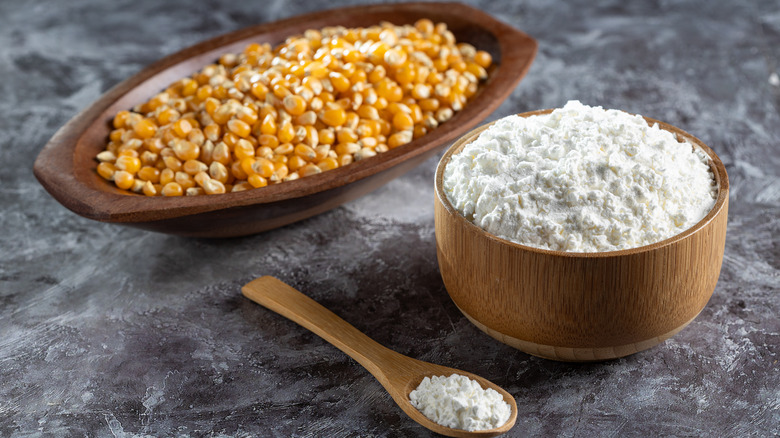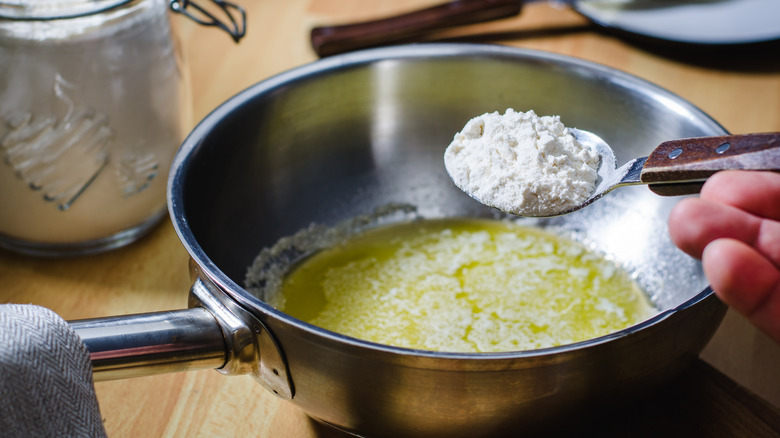The Key Tip To Remember When Substituting Cornstarch With Flour
It's not the most glamorous artisan ingredient in your pantry, but cornstarch pulls a lot of weight in the kitchen. You may not get excited thinking about tossing that teaspoon of cornstarch in a recipe, but without it, your sauces wouldn't be as thick, and your fried foods and baked goods wouldn't be as perfectly crispy. In fact, you can even use cornstarch to tenderize meat through a process called velveting, which is all to say you should always have some cornstarch handy.
But nobody is perfect when it comes to pantry planning and, sometimes, you need to make due with what you have. If you are looking to cornstarch for its thickening power, another good type of starch is usually all-purpose flour, but that comes with some adjustments that you'll need to make. So Tasting Table spoke with an expert, Leanne Tran, the leader of a six-person, all-female pastry chef team at Le Crocodile, Bar Blondeau, and the Wythe Hotel, to ask about the biggest key when substituting cornstarch with flour.
While there are few minor differences to account for with flour in a recipe, Tran zeroed in on flour's taste and texture compared to cornstarch. She told us, "You must be sure to sprinkle it in carefully and cook the mixture well to avoid a floury and grainy texture." This means letting your flour heat up for several minutes at least while thickening your soups and sauces.
Flour must be cooked better than cornstarch to avoid grainy textures and a raw flour taste
Cornstarch has two properties that make it great for thickening. The first is that because cornstarch is made solely from the endosperm of the kernel, it's almost flavorless, which is a real benefit when you only want to thicken a sauce. Cornstarch is also very finely ground, even more so than flour, which helps it dissolve into liquids more easily. Flour's larger grind and stronger flavor means it needs to be broken down more when using it to thicken so that you can cook off the noticeable taste of raw flour and make sure your sauce stays smooth.
This is why flour is often cooked with fat and made into a roux when being used as a thickener, while cornstarch can just be made into a slurry and added straight without cooking. But flour can work without a roux, too, you just need to heed Tran's warning and make sure it doesn't clump and that you allocate enough time for your sauce to cook the flour.
Flour also requires patience because it has less thickening power than cornstarch. While inexact, the conventional wisdom is that cornstarch is twice as strong as flour, so you'll need to add twice as much flour to a recipe to achieve the same results, which also means more starch to break down. Flour can still give you great results, but you need to realize just how different it is from cornstarch first.

